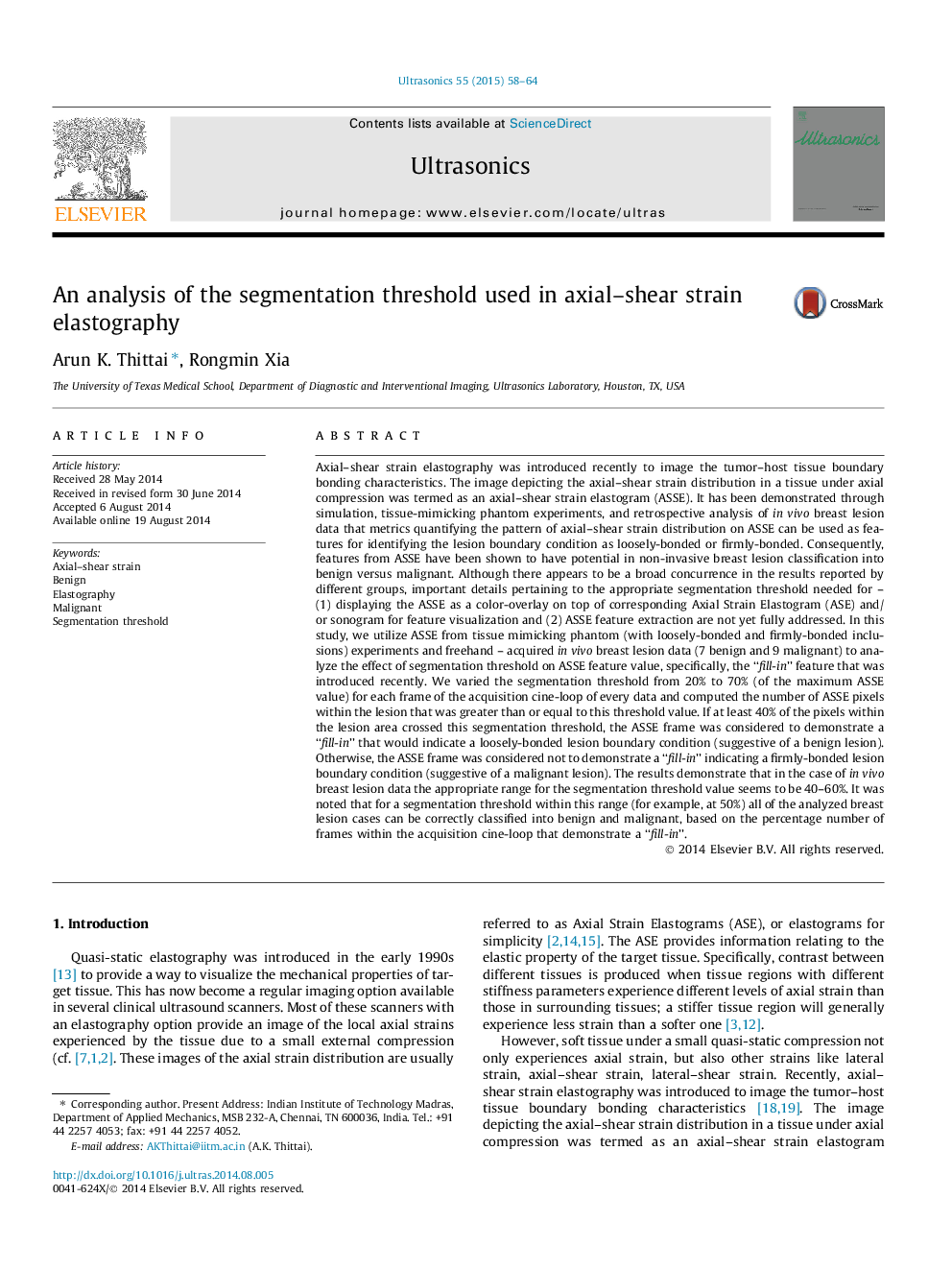| کد مقاله | کد نشریه | سال انتشار | مقاله انگلیسی | نسخه تمام متن |
|---|---|---|---|---|
| 1758766 | 1523214 | 2015 | 7 صفحه PDF | دانلود رایگان |

• Effect of ASSE segmentation threshold on “% fill-in” feature computation was studied.
• Data from tissue-mimicking phantom experiments were analyzed.
• 16 in vivo breast lesion cases, acquired using freehand compression, were analyzed.
• A segmentation threshold within the range of 40–60% was found be appropriate.
• “% fill-in” thus computed has potential in non-invasive breast lesion classification.
Axial–shear strain elastography was introduced recently to image the tumor–host tissue boundary bonding characteristics. The image depicting the axial–shear strain distribution in a tissue under axial compression was termed as an axial–shear strain elastogram (ASSE). It has been demonstrated through simulation, tissue-mimicking phantom experiments, and retrospective analysis of in vivo breast lesion data that metrics quantifying the pattern of axial–shear strain distribution on ASSE can be used as features for identifying the lesion boundary condition as loosely-bonded or firmly-bonded. Consequently, features from ASSE have been shown to have potential in non-invasive breast lesion classification into benign versus malignant. Although there appears to be a broad concurrence in the results reported by different groups, important details pertaining to the appropriate segmentation threshold needed for – (1) displaying the ASSE as a color-overlay on top of corresponding Axial Strain Elastogram (ASE) and/or sonogram for feature visualization and (2) ASSE feature extraction are not yet fully addressed. In this study, we utilize ASSE from tissue mimicking phantom (with loosely-bonded and firmly-bonded inclusions) experiments and freehand – acquired in vivo breast lesion data (7 benign and 9 malignant) to analyze the effect of segmentation threshold on ASSE feature value, specifically, the “fill-in” feature that was introduced recently. We varied the segmentation threshold from 20% to 70% (of the maximum ASSE value) for each frame of the acquisition cine-loop of every data and computed the number of ASSE pixels within the lesion that was greater than or equal to this threshold value. If at least 40% of the pixels within the lesion area crossed this segmentation threshold, the ASSE frame was considered to demonstrate a “fill-in” that would indicate a loosely-bonded lesion boundary condition (suggestive of a benign lesion). Otherwise, the ASSE frame was considered not to demonstrate a “fill-in” indicating a firmly-bonded lesion boundary condition (suggestive of a malignant lesion). The results demonstrate that in the case of in vivo breast lesion data the appropriate range for the segmentation threshold value seems to be 40–60%. It was noted that for a segmentation threshold within this range (for example, at 50%) all of the analyzed breast lesion cases can be correctly classified into benign and malignant, based on the percentage number of frames within the acquisition cine-loop that demonstrate a “fill-in”.
Journal: Ultrasonics - Volume 55, January 2015, Pages 58–64